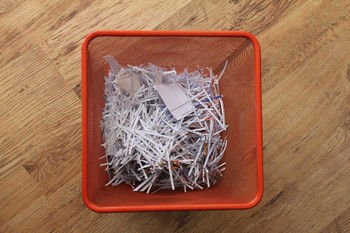Content
Less Is More – The Benefits Of Succinct Copy In Content Marketing

Less Is More – The Benefits Of Succinct Copy In Content Marketing
It was stated over 400 years ago that ‘brevity is the soul of wit’, and in a society of decreased attention spans and rapidly digested information, this is a proverb that still rings true.
Last year, it was found that 88% of companies are using content as part of large scale marketing efforts, but a significantly lower number were confident of how effective it has been for them.
Fundamentally, content marketing is judged on its ability to engage and maintain audiences based on what people read or see. For many readers and users of content, an overloading of data or information is off-putting, with congested graphics and articles often causing a loss in interest.
For producers of content and, more specifically, copy, there are several advantages to being concise in one’s work. A more direct approach to copy can help to connect with readers and appeal to journalist during the outreach process of a piece of content.
Controlled Construction
In the forging stages of any design of content, the focus is predominantly given to the user experience in how a clear message will be given to those viewing the piece.
If you’re producing customer-facing content specific to a genre or niche of interest then the language must reflect that. However, heavy use of jargon is largely unnecessary, so a combination of simpler language and a level of assumed knowledge are more pertinent to copy for this purpose.
When copy is being used to complement or introduce visualisations of data and graphics, language that is short and focused will direct attention to the graphic.
Long introductions and extended captions jeopardise content in the sense that they distract from the key points of a piece and make it less cohesive. The production stage must, therefore, pay attention to how text and visuals harmonise and are then displayed together in an infographic or content article.
The importance of this is shown in a report by Adobe named ‘The State of Content’, which claims that ‘7 in 10 say content “must display well on the device”’. As technology progresses it seems that the time given to consume information is minimal, so unpretentious and simple copy can be decisive in whether a piece of content is shared or not.
Moreover, in the same study, it was found that Millennials favour smartphones as their main device for viewing content, meaning that effectively reduced copy can be a defining factor for the overall success of a piece.
Organised Outreach
Once the designs are approved and completed then comes the somewhat daunting task of reaching out to new and existing contacts and thus begin the process of link building.
Much like the emphasis given to succinctness in the design process, the outreach stage should attempt to adhere to similar principles. An email template should endeavour to both be tailored in whom it is sent to, but simple in its execution. A journalist requires a clear picture of what the content is showing, and an email they receive should honour that.
Likewise, if a press release is to be written, then it should be suitably adjusted to fit the language and style of the publication being outreached. At this year’s BrightonSEO, Sophie Everett gave a talk about packaging and pitching story to journalists. Sophie was critical of fancy templates, and encouraged the production of ‘news-ready copy’.
By attaching a press release within an email, journalists can then easily translate the copy into their own publication. In the same way that readers give up little of their time in which they judge a piece of content, journalists do the same. Your pitch is one of potentially hundreds that they will receive in a day, so it is therefore imperative that copy is direct and engaging.
To conclude, the ‘less is more’ ethos is a system that can be carried throughout the production and outreach of a piece of content marketing. Putting quality over quantity may often require more work at several stages in the process of creating content, but its potential results are invaluable to agencies and their clients. Rigorous and uncompromising editing will help to guarantee effective copy to win over easily distracted audiences.
Share











